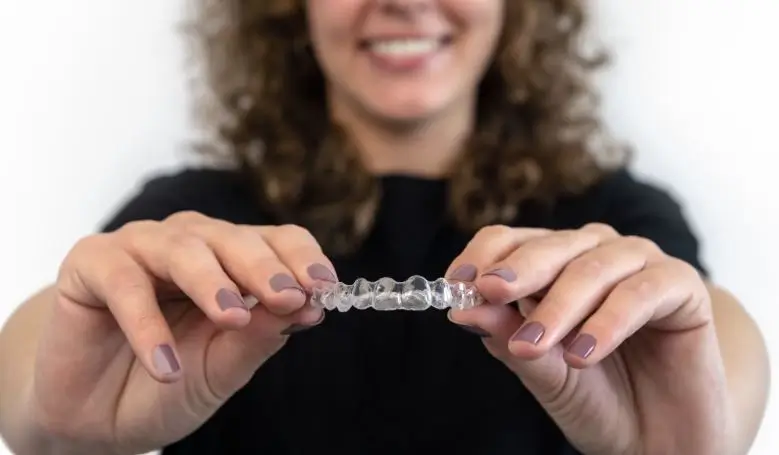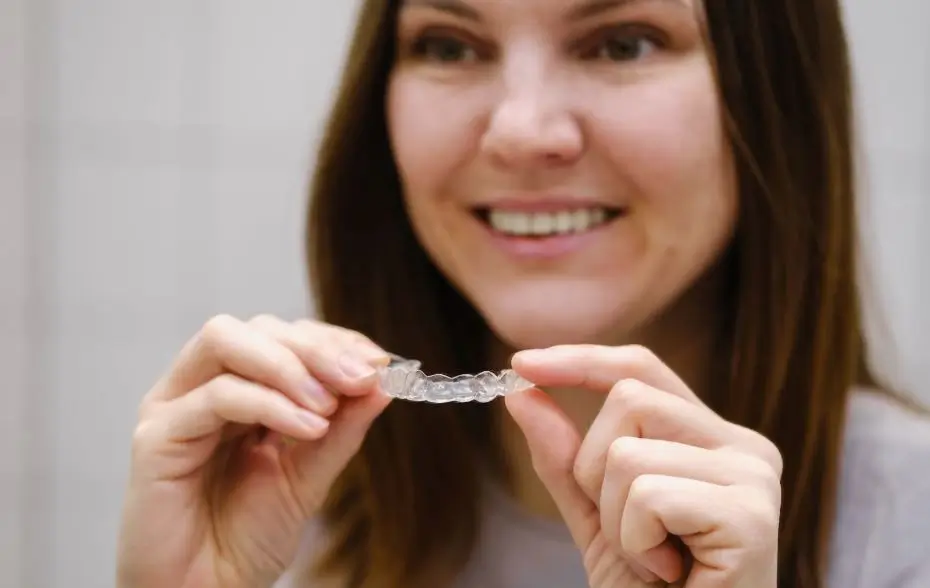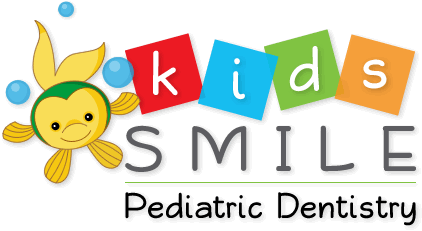Braces vs. Invisalign®: Pros and Cons

Orthodontic treatments have transformed, offering functional and aesthetically appealing solutions. For many individuals seeking to improve their smile, the choice often comes down to braces or Invisalign®. Each option has unique features, benefits, and drawbacks, making it crucial to understand what works best for specific needs and lifestyles. Choosing between these popular treatments can significantly impact the journey toward a perfect smile.
How Traditional Braces Work for Kids
Traditional braces are one of the most reliable orthodontic treatments for correcting dental alignment issues in children. These braces consist of metal brackets bonded to the teeth and connected by a wire, which is adjusted periodically to guide teeth into their proper positions. Orthodontists often recommend braces for kids because they effectively address various issues, including crooked teeth, overcrowding, and bite irregularities.
Initial Assessment and Planning
Orthodontists evaluate the child’s dental structure using X-rays, photographs, and teeth impressions. This assessment helps create a personalized treatment plan to address specific alignment issues. The plan determines the placement of brackets and the duration of treatment.
Attachment of Brackets and Wires
Small metal brackets are bonded to the surface of each tooth using a special adhesive. A flexible archwire is threaded through the brackets, applying gentle pressure to move the teeth over time. Elastic bands may also correct the bite alignment or provide additional support.
Periodic Adjustments and Tightening
Regular visits to the orthodontist are scheduled to adjust the wires and ensure the teeth are moving as planned. Adjustments involve tightening the wires or replacing them with new ones to maintain consistent pressure. This process is crucial for gradually guiding teeth into the correct positions.
Monitoring and Addressing Oral Hygiene
Maintaining oral hygiene is essential throughout the treatment to prevent issues like cavities or gum disease. Orthodontists provide specific tools and guidance for cleaning around brackets and wires. Children are encouraged to avoid sticky or hard foods that can damage the braces or hinder progress.
Completion and Retention Phase
The braces are removed once the teeth are aligned, leaving the child with a straighter smile. Retainers are provided to maintain the results and prevent teeth from returning to their original positions. Consistent use of the retainer is key to preserving the treatment’s outcome.
How Invisalign® Works for Kids
Invisalign® is a modern orthodontic treatment that uses clear, removable aligners to straighten teeth. These aligners are custom-made for each patient, offering a discreet and convenient alternative to traditional braces. Invisalign® is gaining popularity for kids because it allows them to maintain their normal activities while improving their smiles without the discomfort of metal brackets or wires.
Consultation and Assessment
Orthodontists evaluate the child’s teeth to determine whether Invisalign® is suitable. Digital scans or impressions are taken to create a precise 3D teeth model. This model is used to develop a customized treatment plan that outlines the progression of tooth movement.
Creation of Custom Aligners
Using the 3D model, a series of clear aligners is fabricated to gradually shift the teeth into their desired positions. Each aligner is designed to move the teeth slightly, following the orthodontist’s treatment plan. Aligners are made of smooth, BPA-free plastic, ensuring comfort during wear.
Wearing the Aligners
Aligners are worn most of the day, usually around 20 to 22 hours, and removed only for eating, drinking, and oral hygiene. Kids are instructed to switch to the next set of aligners every one to two weeks as directed by their orthodontist. The gradual aligner change ensures continuous and gentle pressure for effective tooth movement.
Monitoring Progress With Regular Checkups
Orthodontists schedule periodic appointments to track progress and make any necessary adjustments to the treatment plan. These visits help ensure the teeth align as planned and that the child follows the prescribed aligner schedule. Adjustments may include modifying aligners or adding attachments to enhance alignment.
Completion and Retention Phase
Once the treatment is complete, a final aligner or retainer is provided to maintain the results. Retainers must keep the teeth in their new positions and prevent them from shifting back. Regular follow-ups may be recommended to monitor long-term stability and ensure the treatment’s success.
Pros and Cons of Braces
Knowing the advantages and disadvantages of braces helps make an informed decision about orthodontic treatment. Awareness of what braces can offer and their challenges ensures a realistic expectation for the treatment process and results.
Pros of Braces
Braces are a dependable option for addressing a wide range of orthodontic issues. Their effectiveness and versatility make them a preferred choice for many patients.
Effective for Complex Cases
Braces effectively correct severe misalignments, including overbites, underbites, and overcrowding. Their ability to handle intricate cases makes them ideal for children and adults with significant orthodontic concerns. The constant application of pressure ensures precise and steady tooth movement.
No Need for Patient Compliance
Since braces are fixed, they do not rely on patient discipline for effectiveness. Unlike removable options, braces continue working throughout the day without interruptions. This feature ensures consistent progress regardless of the patient’s daily habits.
Durable and Long-Lasting
Braces are built to withstand the daily rigors of eating and speaking. Their sturdy design minimizes the likelihood of damage, making them a reliable treatment option. Orthodontists can also adjust and repair braces quickly during regular checkups.
Cons of Braces
Despite their effectiveness, braces have drawbacks that may affect comfort and convenience. Awareness of these challenges can help prepare for the commitment involved in this treatment.
Visibility
Braces’ metal brackets and wires are obvious, which can concern those seeking a discreet solution. Their prominent appearance may cause self-consciousness, especially in social or professional settings. Options like ceramic braces offer less noticeable alternatives but still fall short of the invisibility of aligners.
Challenging Maintenance
Braces require meticulous oral hygiene to prevent plaque buildup around the brackets and wires. Specialized cleaning tools like interdental brushes are often needed to ensure thorough cleaning. Food restrictions are also necessary to avoid damaging the brackets or wires, which can add inconvenience.
Potential for Discomfort
Braces can irritate the cheeks and gums, particularly after adjustments. The brackets and wires may create sore spots that take time to heal. Regular orthodontic appointments for tightening can also result in temporary discomfort.
Pros and Cons of Invisalign®
Knowing Invisalign®’s benefits and challenges ensures that the treatment meets personal and lifestyle needs. This understanding helps decide if Invisalign® aligns with dental alignment and convenience goals.
Pros of Invisalign®
Invisalign is a modern orthodontic solution offering a discreet and flexible approach to straightening teeth. Its innovative design provides unique advantages that cater to comfort and convenience.
Virtually Invisible Appearance
The clear aligners are nearly undetectable, making Invisalign® an excellent option for those who value aesthetics. The aligners blend naturally with teeth, making users feel confident during treatment. This feature is especially appealing to teenagers and professionals seeking subtlety.
Removable Design
Invisalign® aligners can be easily removed, making it simple to maintain good oral hygiene and enjoy meals without restrictions. This flexibility allows users to brush and floss normally, preventing oral health complications. Removing the aligners also eliminates the challenges associated with cleaning fixed braces.
Comfortable Fit
The aligners are made of smooth, BPA-free plastic, reducing the risk of irritation to the gums and cheeks. This design eliminates sharp edges, providing a more comfortable experience than metal braces. Fewer adjustments are needed, minimizing discomfort throughout the treatment.
Cons of Invisalign®
Despite its advantages, Invisalign® has limitations that may not suit everyone. Being informed about these challenges helps in setting realistic expectations.
Requires Discipline
The success of Invisalign® relies heavily on wearing the aligners for the recommended 20 to 22 hours daily. Inconsistent use can delay progress and extend the treatment timeline. This requirement demands a high level of commitment, particularly for children and teens.
Not Ideal for Severe Cases
Invisalign® is less effective for addressing complex orthodontic issues, such as extreme overbites or significant tooth rotations. Orthodontists may recommend braces for these cases to achieve better results. While advancements have been made, the aligners are still most effective for mild to moderate misalignments.
Cost and Replacement Issues
Invisalign® aligners can be more expensive than traditional braces, which may be a limiting factor for some patients. Lost or damaged aligners add to the cost and can disrupt the treatment schedule. Careful handling is essential to avoid these additional expenses.

Traditional Braces vs. Invisalign®
Orthodontic treatments have evolved significantly, providing practical solutions for correcting dental alignment. Traditional braces and Invisalign® are the most popular options today, each offering unique benefits tailored to different needs. Deciding between these treatments requires a clear understanding of their advantages to make the best choice for long-term results.
Benefits of Traditional Braces
Traditional braces have been a reliable orthodontic solution for decades. They offer features that make them highly effective for various dental issues. Their durability and adaptability make them a preferred choice in many cases.
Effective for Complex Dental Issues
Traditional braces are ideal for correcting severe misalignments, including rotated teeth, deep overbites, or significant gaps. Their ability to apply consistent and controlled pressure ensures optimal results even in the most challenging cases. Orthodontists can make precise adjustments to guide teeth into alignment effectively.
Customizable Options for Aesthetics
Modern braces are available in different materials, including ceramic brackets that blend with the natural color of teeth. These options reduce the visual impact of braces while maintaining their effectiveness. Colored bands also customize younger patients, adding a fun and personalized touch.
No Risk of Misplacement
Unlike removable aligners, braces are fixed, so there is no risk of losing them. This eliminates concerns about misplaced components and ensures uninterrupted treatment progress. Patients also do not need to worry about keeping track of additional accessories, making braces a practical option for children and teens.
Advantages of Invisalign®
Invisalign® stands out as a revolutionary orthodontic solution. It provides a discreet and convenient way to achieve a straighter smile, and its innovative features cater to patients seeking flexibility and comfort in their treatment.
Promotes Better Oral Hygiene
The removable nature of Invisalign® aligners allows patients to brush and floss their teeth as they normally would. This feature helps prevent plaque buildup and reduces the risk of cavities or gum disease during treatment. Maintaining oral health becomes significantly more manageable compared to traditional braces.
Enhances Patient Confidence During Treatment
The clear design of Invisalign® aligners ensures that patients can smile confidently while undergoing treatment. This aesthetic benefit particularly appeals to adults and teens who prefer a low-profile solution. The aligners are nearly invisible, making patients feel at ease in social and professional settings.
Accommodates Active Lifestyles
Invisalign® aligners are convenient for patients participating in sports or activities where metal braces might pose risks. The aligners can be removed during these activities, preventing injury or discomfort. This flexibility makes Invisalign® a preferred choice for individuals with active lifestyles.
Braces vs. Invisalign®, Which is Better?
The choice between braces and Invisalign® depends on individual needs, lifestyle, and the complexity of the orthodontic issue. Braces are often the better option for addressing severe misalignments, while Invisalign® offers convenience and aesthetic appeal for less complex cases. Consulting an experienced orthodontist ensures that the decision aligns with treatment goals and provides the most effective path to achieving a straighter, healthier smile. Making the right choice enhances dental alignment and boosts confidence and overall well-being.
Discover more expert tips and insights on dental care for children by visiting Kids Smile Pediatric Dentistry blog.
